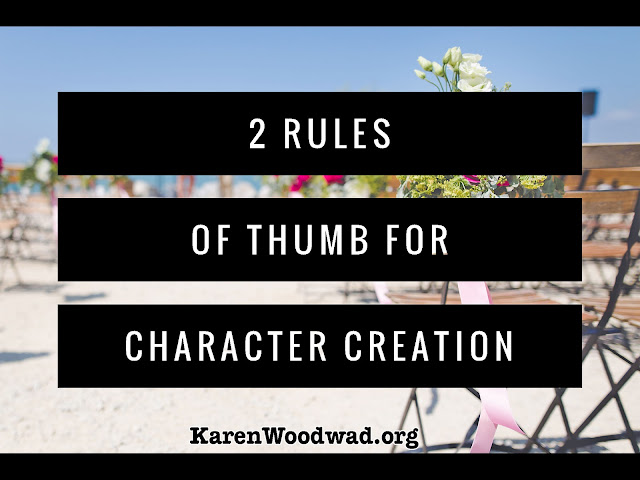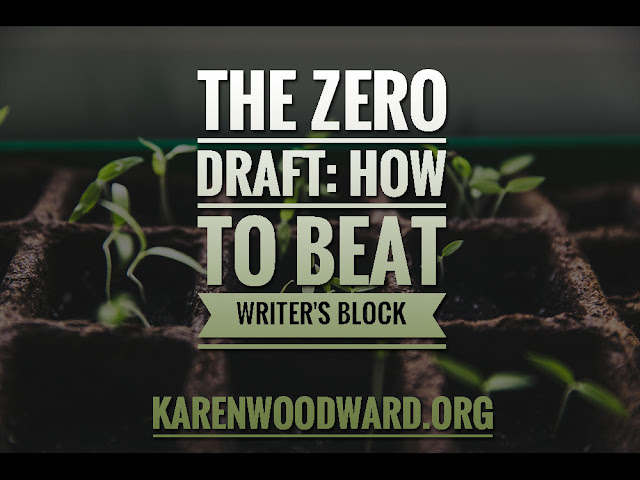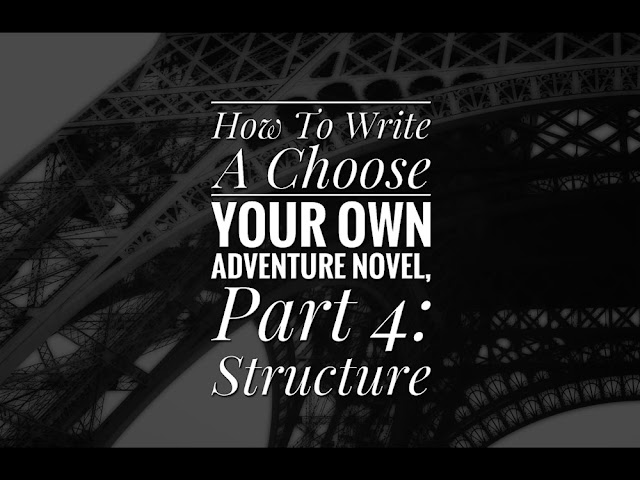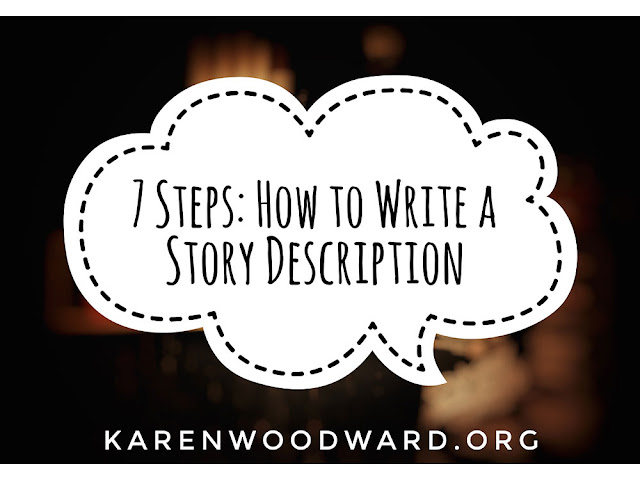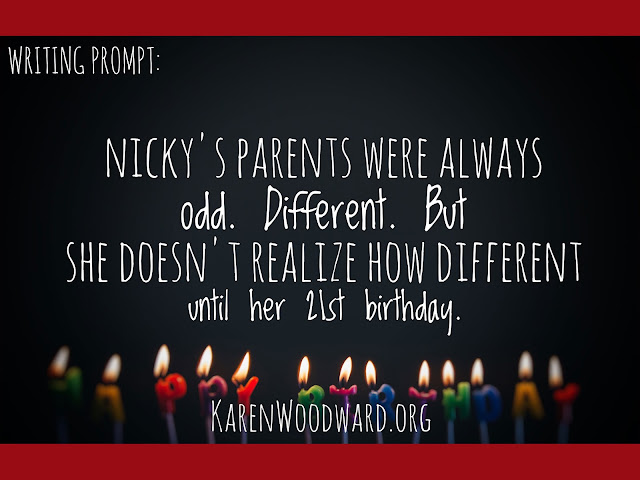Today I want to focus on one particular aspect of story structure: pinch points. In what follows I have a lot to say about them so let's start by looking at what they are.
Pinch Points Are Reminders
A pinch point reminds the reader of five things:
- Who the antagonist is.
- What the antagonist wants.
- Who the protagonist is.
- What the protagonist wants.
- What is at stake.
Often, the first Pinch Point comes directly after the Fun & Games/Tests & Trials part of a story and serves to bring it back to the main storyline, reminding readers of the core conflict. Sometimes this can quickly take the reader from bemused chuckling to a gut wrenching feeling of loss.
Pinch Points Are About Truth And Transformation
More abstractly, pinch points are about exposing the truth. The truth about the protagonist, the antagonist, and their situations/realities. Realizing, understanding, the truth of one's situation often causes pain and destruction but, in the end, transforms the protagonist (or the protagonist fails to transform and has a tragic end).
It has been my experience that truth/transformation pinch points are
much more common in literary works, dramas, romantic comedies, and so on, than they are in action/adventures, mysteries and thrillers.
Where Are The Pinch Points?
In a
four act structure the first pinch point comes in the middle of the second act and the second pinch point comes in the middle of the third act.
In a
three act structure the first pinch point comes in the middle of the first part of the second act and the second comes in the middle of the last part of the second act.
If that’s confusing (and it is!) there’s a helpful diagram in this post:
Using Pinch Points To Increase Narrative Drive. As with everything, this is only a general guideline. Fit them in where it feels appropriate for your story.
Now let’s take a look at each pinch point in more detail.
Pinch Point One
The two Pinch Points serve the same purpose:
- Bringing the focus back to the core conflict between the protagonist and antagonist.
- To ensure the stakes of the conflict are crystal clear to the reader. This often means that this scene should be vivid. Dramatic.
Also, we can take this opportunity to remind the reader of the essence of both the protagonist and antagonist, of who they are, what they want and how far they'll go to get it.
Truth & Pain
Additionally—and whether this is true of the pinch points in your story may largely depend on what
kind of story it is (see the examples below)—a pinch point can also be a moment of truth leading to intense pain and radical change (perhaps not right away, but it puts events in motion).
I find that in an action/adventure the pinch points are more about showing the protagonist and antagonist (or the antagonist's agents) in physical conflict while, say, romantic comedies are more about how the protagonist and antagonist (the two lovers) destroy each other’s (false) worlds, destroy each other’s illusions, the lies they tell themselves, by forcing each other to see the truth about their lives, about themselves.
Books could—and have!—been written about this (McKee’s
Story, Christopher Vogler's
The Writer's Journey, and so on) but the idea is that it’s easy to get comfortable with one’s life. It’s easy to coast. You have a job, a place to live, perhaps a significant other, perhaps a family, and you’re genuinely happy.
But then things you’re not so thrilled about start happening—you’ve been putting on weight, but that’s okay. You’re older but, hey, that’s no reason to start exercising. Sure you haven’t bought new clothes in a year but that’s not
really so important. After all, being swayed by a person’s looks is so
superficial. Okay, sure, you’ve been disconnecting from your friends, choosing to stay home and watch TV. And so on. Then you wake up, look in the mirror and realize: I’m my mother!!!!!! (* cue screaming violins *)
Things happen, life events, that you’re not thrilled with but you say, well, that’s okay. I’m happy, or at least not unhappy. Why rock the boat? And, slowly over the years it’s like a game of telephone. You go from being genuinely, authentically, happy with your life to disgruntled, disillusioned. It’s the death of a million cuts, it’s the frog being slowly boiled to death.
Of course your protagonist isn’t a frog being boiled to death! Instead of a frog we could talk about the postal worker who goes on a murdering spree. Or we could talk about the man or woman who gets up one morning and walks out on their family.
Speaking generally, the protagonist is on a trajectory from true happiness to destruction. If not their personal, physical, destruction, the complete and total destruction of their life, their world.
Truth as Destroying/Cleansing Fire
Every once in awhile we need a shock. We need to re-connect with how things really are, with how other people see us, warts and all. The truth, like fire, strips everything away and takes us back to our most elemental, most real, form. And it’s agony because we lose all those lovely illusions that were most dear to us. Here’s how I picture it:
Truth -> radical change/agony -> transformation or failure
At the beginning of a romantic/dramatic story, the protagonist is somewhere in the middle of this arc. What the pinch points do—this isn’t the only thing they do, but it’s one of them—is reveal
this truth to your character.
That is, they reveal to the character that they are living a comfortable, happy, lie. In revealing this, the protagonist is forced to deal with it. (When this happens in real life it hurts like hell but you’ve been saved from something far worse. At least, that’s how I look at it.)
In this kind of pinch point you show readers how disconnected the protagonist is from the way things really are. You show the protagonist (and the reader) their perception of the world and then you show them their world (/their life) as it really is. The pinch point itself is about the protagonist being hit with this revelation.
This clash between mental image, between their current belief system and how things really are can be extremely painful. Truth hurts. But in return they get to see how they’ve gone from genuine happiness to something else. Something dark. They see they’re headed for destruction.
Sometimes this destruction can be averted, but not without a cost. If your protagonist is a workaholic who continually puts his family second because he thinks that’s what’s best for them, this revelation can save his relationships with those he loves but it might cost him his business, his dreams for the domination of the corporate world. Truth always exacts a price.
Examples
Okay, that was a lot of information! Let me try to bring this into perspective with two examples. The first is of a classic action/adventure,
Star Wars IV: A New Hope. The second is of a romantic comedy—
You’ve Got Mail—where the conflict, the tension, between the protagonist and antagonist revolves around using truth to destroy illusion.[1]
Star Wars
I know I use examples from
Star Wars IV: A New Hope quite a bit, but the movie has the advantage that almost everyone has seen it! In
Star Wars the first pinch point occurs when Imperial Forces, sent to recover R2-D2, menace Luke Skywalker and his allies.
Here the Pinch Point is split over two scenes. In the first scene Imperial Stormtroopers stop Luke Skywalker and Obi-Wan to question them about their droids. This is where Obi-Wan says, “These aren’t the droids you are looking for.” It's a great scene!
The second scene (or, really, sequence) in the first pinch point has the Imperial Stormtroopers shooting at Han Solo as he’s going through the preflight check. The Millennium Falcon then takes off only to be chased and shot at by what looks like an Imperial battleship.
So here we’re reminded of the protagonist and antagonist (Luke and his band of allies vs the powers of the Empire exemplified by Darth Vader), what their goals are (Luke wants to deliver the plans of the Death Star to the rebel alliance, the forces of the Empire want to prevent this) and what the stakes of the conflict are (the Empire can blow up your planet!)
You’ve Got Mail
Just before the first pinch point we see Kathleen Kelly (Meg Ryan’s character) in all out denial about the likelihood that Fox Books is going to put her small independent bookstore (The Shop Around The Corner) out of business. Everyone else sees that her bookstore is in trouble and thinks she’ll be forced to close, but Kathleen is living in a dream world. She believes she can compete. “Everything is fine!” she says and smiles.
The first plot point occurs when Kathleen discovers that Joe (played by Tom Hanks)—the charming guy who came into her bookstore earlier—is Joe Fox of Fox Books (the big chain of bookstores that is putting indie bookstores out of business). They then have a passionate exchange in which Joe tells Kathleen the truth. What Joe says to her begins to destroy Kathleen's comforting world of illusion.
Let me set this scene up. When Kathleen discovers that Joe’s last name is Fox she accuses him of spying on her because she’s his competition. Here’s where they become passionate and the truth comes spilling out:
“It’s a charming little bookstore,” Joe says. What do you sell? About 350 thousand dollars worth of books a year?”
“How did you know that?” Kathleen asks, astonished and oh-so-very suspicious.
“I’m in the book business,” Joe says. He smiles at Kathleen but there is no warmth, only condescension.
Kathleen’s face grows hard. Joe has made a direct hit. She shakes her head. “
I am in the book business.”
“I see,” Joe says. “And we are the Price Club, only instead of a 10 gallon vat of olive oil for $3.99 that won’t even fit under your kitchen cabinet,
we sell cheap books.”
Joe pauses a moment then shakes his head. “Me, a spy?” Oh, absolutely. I have in my possession the super-duper secret printout of the sales figures of a bookstore so inconsequential yet full of its own virtue that I was immediately compelled to rush over there for fear that it’s going to put me out of business.”
Kathleen is so utterly shocked and completely undone by Joe’s words that she can only make an inarticulate squawking sound.
In my opinion, that’s the first pinch point. It’s a moment of truth and unspeakable pain for Kathleen. Joe is saying: It’s not personal, but the thing you love most in life is going to go away and I’m the one who is going to take it from you. And there’s nothing you can do about it.
Kathleen’s loss doesn’t happen all at once, but that’s where she begins to wake up, begins to realize what her situation
really is.
Wow, this post is long! I need to stop here. I’ll pick this topic up again later.
I’m intensely interested in what you think about what I’ve said about pinch points. Do you agree? Disagree? Is there something you’d like to add? An example you’d like to share? Please do! I love it when you contribute to the discussion. That’s how I think of these blog posts. We’re sitting somewhere having coffee, chatting, and I’m laying out my thoughts. But it can be awfully one-sided! I want to hear your thoughts too. :-)
I’ve decided that I’m going to try, every post, to pick a book or audiobook I personally have loved and recommend it to my readers. This serves two purposes, I want to share what I’ve loved with you, and, if you click the link and buy
anything over at Amazon within the next 24 hours, Amazon puts a few cents in my tip jar, at no cost to you. So, if you click the link, thank you! If not, that’s okay too. I’m thrilled and honored that you’ve visited my blog and read my post. :-)
Today I would like to share links to a series which has become my number two favorite series, behind
Jim Butcher's Dresden Files
(which I cannot recommend highly enough, the books just keep getting better). Anyway, the series is Kelley Armstrong’s Cainsville:
Omens,
Visions,
Deceptions,
Betrayals. Cainsville is a mystery crossed with horror crossed with romance. (BTW, I’m NOT saying that if you like the Dresden Files that you’ll like Cainsville. They are very different. But they
are both what I would call urban fantasy.)

Notes:
1. I should mention that, as near as I can tell,
You’ve Got Mail has four pinch points, two for each main character’s arc. So, above, when I talk about the first pinch point, this is really the first pinch point of Kathleen’s arc. Just FYI.

